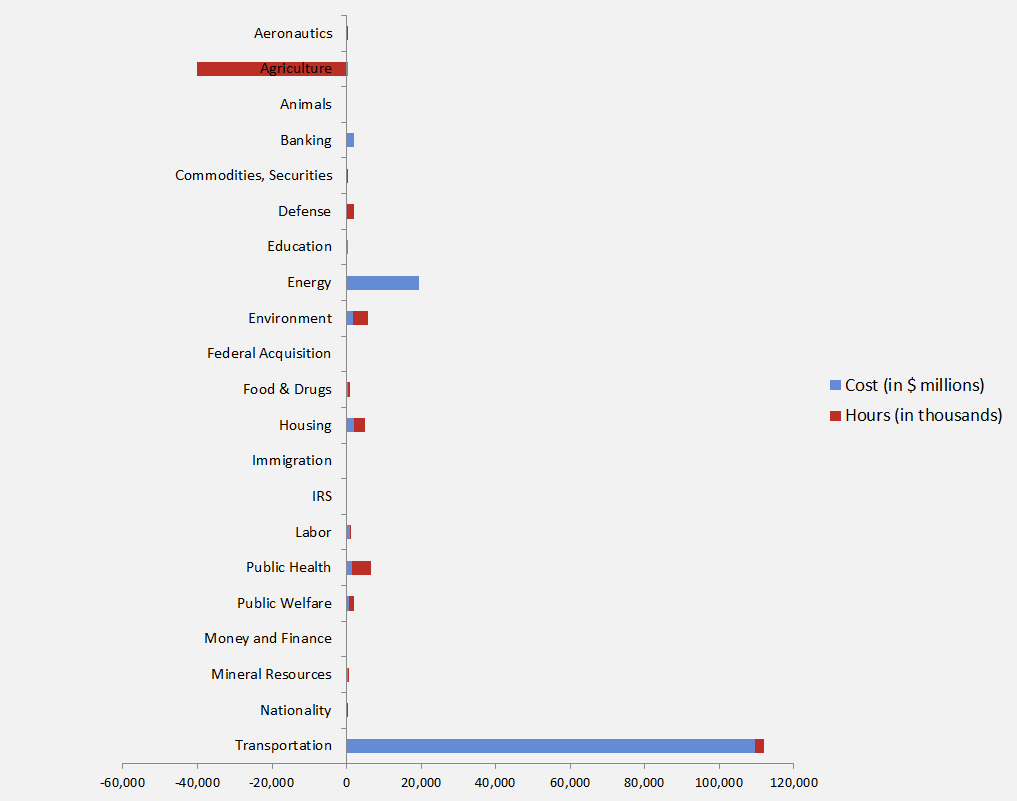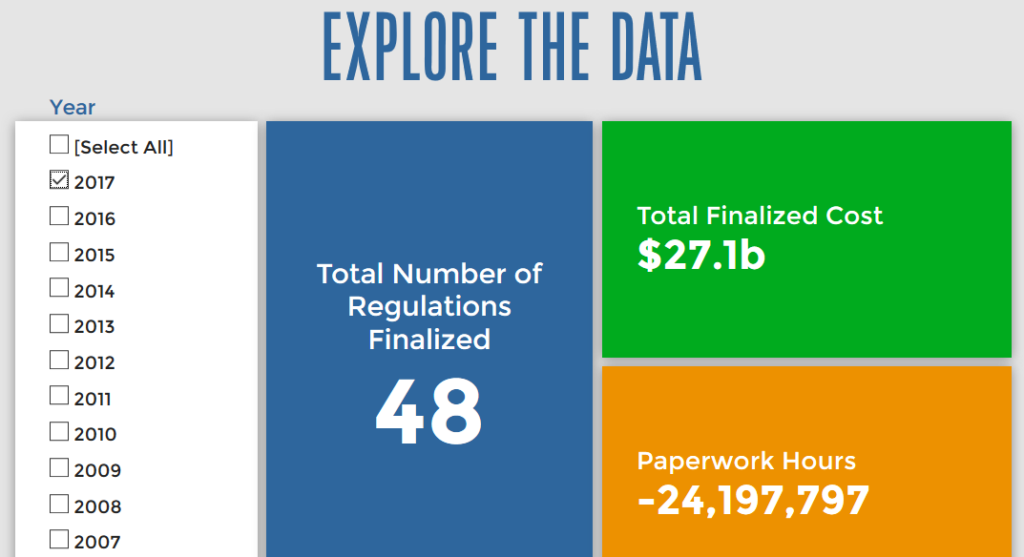Week in Regulation
February 20, 2017
A Deregulatory Week
Although President Trump’s one-in, two-out regulatory reform is awaiting full implementation, regulators still managed to reduce burdens this week. The results: $2.2 million in fewer costs and more than 7,000 in fewer paperwork hours are largely the result of the regulatory moratorium and a new Affordable Care Act “Market Stabilization” proposal that cut costs and hours. There were no monetized benefits this week. The per capita regulatory burden for 2017 is $428.
Regulatory Toplines
- New Proposed Rules: 27
- New Final Rules: 37
- 2017 Total Pages of Regulation: 11,130
- 2017 Final Rules: $27.1 Billion
- 2017 Proposed Rules: $111.5 Billion
The American Action Forum (AAF) has catalogued regulations according to their codification in the Code of Federal Regulations (CFR). The CFR is organized into 50 titles, with each title corresponding to an industry or part of government. This snapshot will help to determine which sectors of the economy receive the highest number of regulatory actions.
Aside from routine airworthiness directives, the Department of Agriculture published the only notable measure this week. This minor regulation seeks to issue a “Federal Milk Marketing Order” for California milk. There is paperwork associated with this determination, but only 2,138 burden hours.
Tracking Regulatory Modernization
The House and Senate have both voted to overturn the Securities and Exchange Commission’s “Resource Extraction” rule, the Department of Interior’s “Stream Protection” measure, and a rule governing firearms purchases for social security disability recipients. Now that these measures have been signed, this will eliminate $2.4 billion in costs and 435,000 paperwork burden hours.
In addition, the House has voted to overturn the Department of Labor’s “Blacklisting” rule, a methane measure for federal lands, “Teacher Preparation Issues,” part of the “Every Students Succeeds Act,” and six other minor regulations. Currently, Congress and the administration have proposed to eliminate more than $9 billion in burdens ($2.4 billion annually) from last-minute Obama-era regulations, along with 7.3 million paperwork burden hours. To date, there have been 28 resolutions of disapproval introduced.
Affordable Care Act
This week the administration released its “Market Stabilization” rule to deal with the transition from the Affordable Care Act to its possible replacement. This proposal shortens the open enrollment period and clocks in at a pedestrian 19 pages. The proposal expects to generate benefits through improved protection from the risk of catastrophic injuries and cost savings to the government due to the reduced open enrollment period. Annual costs decline by $700,000 under the proposal and paperwork declines by more than 9,000 hours.
Since passage, based on total lifetime costs of the regulations, the Affordable Care Act has imposed costs of $53 billion in final state and private-sector burdens and 176.9 million annual paperwork hours.
Dodd-Frank
Click here to view the total estimated revised costs from Dodd-Frank; since passage, the legislation has produced more than 74.8 million final paperwork burden hours and imposed $38.5 billion in direct compliance costs.
Total Burdens
Since January 1, the federal government has published $138.7 billion in compliance costs ($27.1 billion in final rules) and has cut 20.8 million paperwork burden hours (due to 24.1 million in reductions from final rules). Click below for the latest Reg Rodeo findings.












